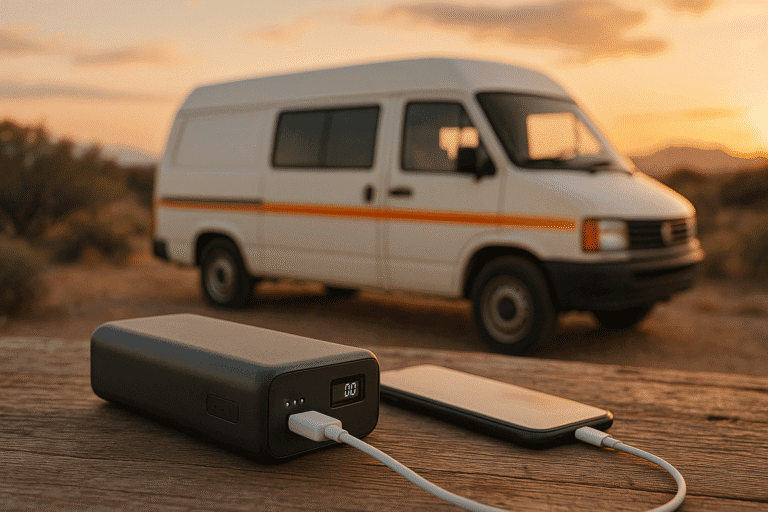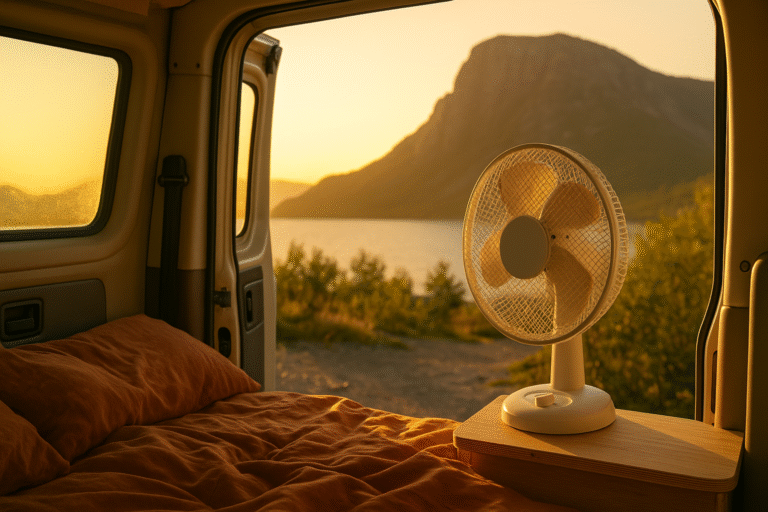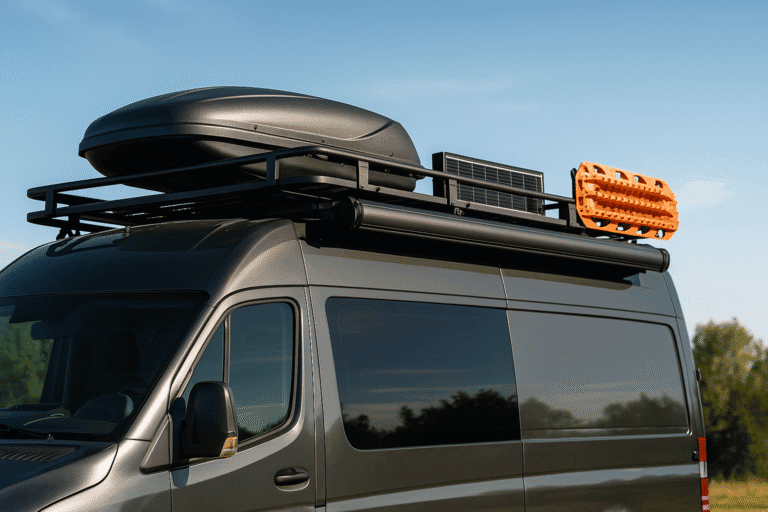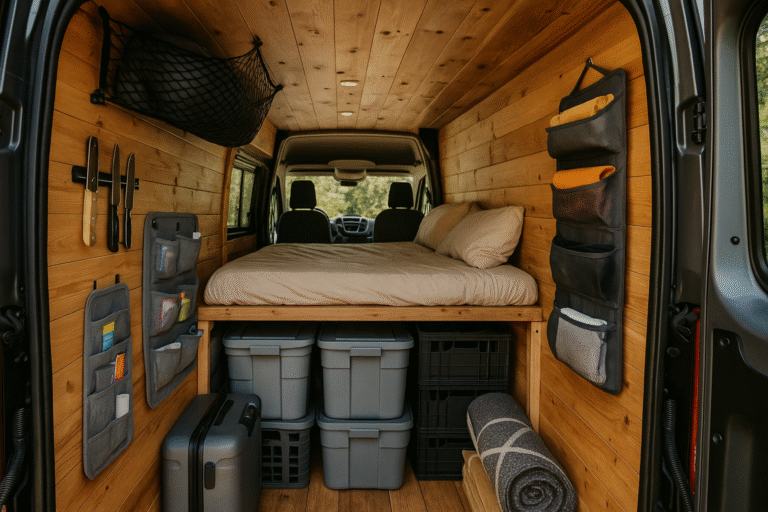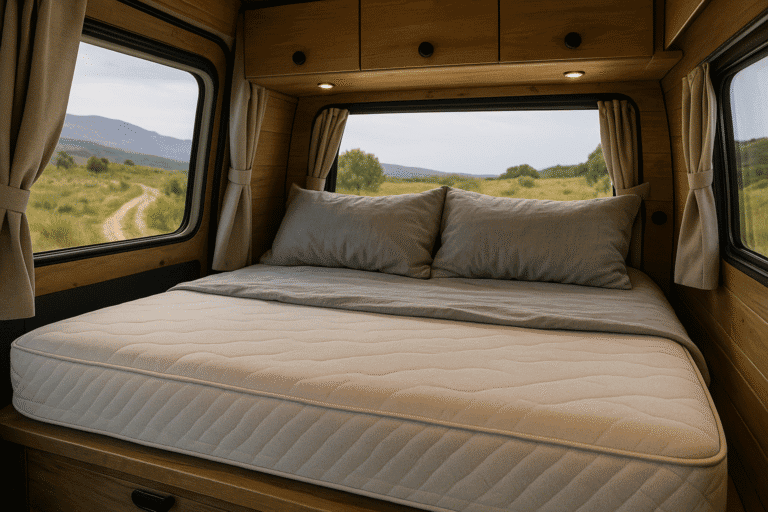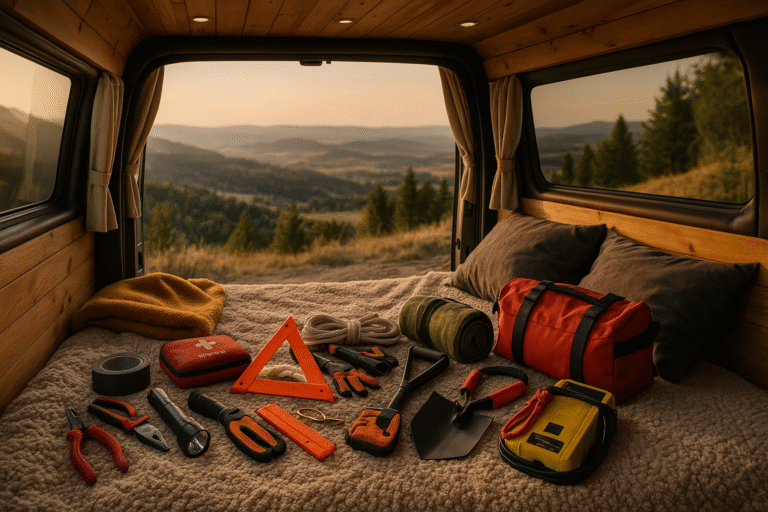Van Life Internet Setup: How to Stay Connected Off-Grid or On the Road

Whether you’re working remotely, streaming Netflix in the woods, or just checking Google Maps, having a reliable van life internet setup has become a must-have rather than a luxury. For full-time van lifers and weekend warriors alike, connectivity equals freedom. But how do you stay online when you’re constantly on the move—or miles from the nearest cell tower?
In this guide, we’ll break down the best options for staying connected while living in a van, from simple mobile hotspot solutions to robust Starlink-powered setups.
Why a Van Life Internet Setup Matters
Modern van life isn’t all hammocks and hiking. Many nomads rely on internet access for remote work, content creation, video calls, trip planning, and even essential services like banking or navigation. A dependable internet solution can mean the difference between thriving off-grid and driving into town every day for Wi-Fi.
Key Considerations Before You Choose Your Van Life Internet Setup
- Coverage: Will you mostly be near cities or out in national forests?
- Speed: Do you just check email, or do you need HD video calls?
- Data Limits: Unlimited data isn’t always truly unlimited—especially for hotspots.
- Power Usage: Starlink, for example, can draw over 50W—something to plan for off-grid.
- Coverage: Will you mostly be near cities or out in national forests? Use a tool like cell coverage maps for van lifers to assess your carrier’s signal in common travel zones.
📡 Types of Internet Devices for Van Life: Strengths and Limitations
Before you choose your van life internet setup, it helps to understand the core types of devices that make mobile internet possible. Each technology serves a specific need, and knowing their pros and cons will help you build a system that fits your travel style, data needs, and budget.
1. Smartphone Hotspots (Cellular Tethering)
Most smartphones today allow you to share your cellular data connection with other devices, acting as a mini Wi-Fi router.
- ✅ Strengths: Built-in, low-cost, easy to use
- ⚠️ Limitations: Limited hotspot data, poor signal in remote areas, drains phone battery
2. Dedicated Mobile Hotspots (MiFi Devices)
Compact routers that connect to a cellular network and provide stronger, more stable internet access for multiple users and devices.
- ✅ Strengths: Better antenna, optimized for multiple users, portable
- ⚠️ Limitations: Requires a separate plan or SIM, still dependent on cell towers
3. Cell Signal Boosters (e.g., WeBoost)
Boost weak cellular signals to make data and calls more reliable in fringe coverage areas—especially useful when using mobile hotspots or phones for internet.
- ✅ Strengths: Improves weak cell signal dramatically
- ⚠️ Limitations: Doesn’t work if there’s no signal at all
4. Satellite Internet (Starlink Roam)
Connects directly to satellites overhead and provides internet nearly anywhere with a clear view of the sky—ideal for full-time off-grid travel.
-
- ✅ Strengths: High-speed internet in remote places, no data caps
- ⚠️ Limitations: High power draw, costly monthly fee, doesn’t work under trees
Learn more: Starlink Roam Official Site
5. Wi-Fi Extenders and Range Boosters
Amplify weak public Wi-Fi signals from places like campgrounds, libraries, or businesses. Great for budget travelers staying near civilization.
- ✅ Strengths: Affordable and simple for part-time or urban van life
- ⚠️ Limitations: Dependent on external Wi-Fi quality and security risks
📊 Summary Table: Internet Device Types
| Device Type | Best For | Main Weakness |
|---|---|---|
| Phone Hotspot | Basic browsing, short-term | Low data caps, poor signal |
| Mobile Hotspot | Remote workers, RV travel | Extra cost, needs coverage |
| Signal Booster | Weak cell zones | Useless without signal |
| Satellite (Starlink) | Remote/off-grid locations | Expensive + power-hungry |
| Wi-Fi Extender | Urban camping, short stays | Public networks = unreliable |
Top Internet Options for Van Life
1. Mobile Hotspot via Smartphone
This is the most common and budget-friendly method. Most modern phone plans include some hotspot data, which allows you to share your phone’s internet connection with your laptop or other devices.
- ✅ Best For: Casual users and part-time van lifers
- ✅ Carriers: Verizon (best rural coverage), T-Mobile (cheap unlimited), AT&T (balanced)
2. Dedicated Hotspot Device
Devices like the Netgear Nighthawk or Inseego MiFi give you better range and battery life than your phone’s built-in hotspot. Plus, they can often handle multiple users better.
- ✅ Top Pick: Netgear Nighthawk 5G Hotspot
- ✅ Data: Usually needs its own SIM card or plan
3. Starlink Roam (Portable Satellite Internet)
If you’re going remote—really remote—Starlink Roam (formerly Starlink RV) is the most powerful tool in your kit. It works nearly anywhere with a clear view of the sky and provides broadband-level speeds in areas where cell service fails.
- ✅ Monthly Cost: ~$150
- ✅ Power Draw: 50-75W (pair with a strong solar setup)
- ✅ Learn more: Starlink Roam Official Site
4. Public Wi-Fi and Wi-Fi Boosters
Libraries, coffee shops, and campgrounds often offer free Wi-Fi. Devices like the Alfa Wi-Fi Camp Pro can help you connect from a distance, but public networks are usually slower and less secure.
- ✅ Best For: Occasional use or budget backup
Best Devices for Your Van Life Internet Setup
Which Setup is Right for You?
💰 Budget Setup:
Use your phone’s hotspot + camp Wi-Fi when needed. Total cost: $0-$20/mo extra.
💼 Remote Work Setup:
Dedicated hotspot + cell booster (WeBoost) for reliable speeds and connections.
🛰️ Off-Grid Power User:
Starlink + solar setup. Best for full-timers who stream, upload video, or need fast, consistent service.
FAQ: Van Life Internet
Can I get unlimited data?
Sort of. Most “unlimited” hotspot plans throttle your speeds after 50-100GB. Starlink doesn’t throttle, but costs more.
Will Starlink work in dense forests?
Not reliably. It needs a wide open view of the sky.
Do I need a booster?
If you use cell-based internet in remote areas, yes. A WeBoost or similar amplifier helps maintain usable speeds.
Final Thoughts
Your van life internet setup doesn’t have to be complicated—but it does need to match your lifestyle. If you’re working from the road or venturing into remote areas, investing in a reliable setup is one of the smartest moves you can make. Whether it’s a phone hotspot or a full Starlink rig, staying connected lets you roam farther without sacrificing productivity or comfort.


